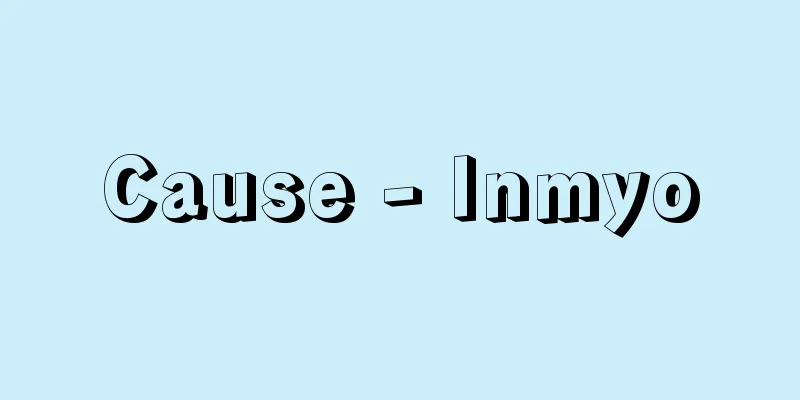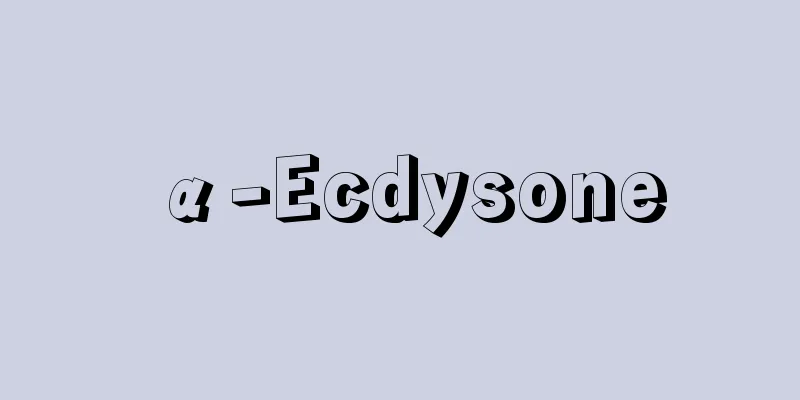Cause - Inmyo

|
A Chinese translation of the Sanskrit term hetu-vidyā. Hetu (cause) is a term that is the basis of an argument (or a medium term if applied to a syllogism). Ming means learning. It refers to Indian, especially Buddhist logic. It is synonymous with nyāya (the study of reason). However, in addition to inference theory and inference formulas, cause and effect also includes epistemology, which is the study of perception, and dialectics, which is a method of debate and the proof of academic theories, so today it is called (Buddhist) knowledge theory, epistemology, or logic. In India, pioneering theories of cause and effect can be found in the medical book Charaka Samhita and the Expedient Mind Theory attributed to Nagarjuna, but in the 2nd or 3rd century, the Nyāya school compiled the Nyāya Sutra and systematized the traditional theory. In Buddhism, examples include Vasubandhu's Treatise on As it Really Is. At that time, analogical reasoning was based on concrete examples, and the reasoning formula consisted of five steps (the five-pronged method). Later, Dignaga (c. 480-540) wrote Pramāna Samuccaya, in which he recognized that direct perception and inference were the only two reliable ways of cognition, and reformed causal reasoning by developing three conditions for argument, a nominalist theory of concepts (apoha), and a three-step argument (the three-pronged method) of assertion, reason, and example. This is called new causal reasoning, and the previous one is called ancient causal reasoning. However, it was Dharmakirti (c. 600-660) who dispelled the analogical character that still remained in Chinna, established that the only reliable arguments were the three principles of identity, causality, and non-knowledge, and asserted a three-stage reasoning system consisting of major premise, minor premise, and conclusion, thus completing Buddhist logic. His epistemology and logic have been written down by many commentators, and have not only formed a major tradition in Indian and Tibetan Buddhism, but have also had a great influence on Indian philosophical schools outside of Buddhism. In Dharmakirti's reasoning system, concrete examples illustrating the major premise no longer played a supporting role, but Ratnakarasanti in the 11th century eliminated the examples as unnecessary and asserted the theory of intrinsic fullness, which states that the major premise is determined only by the extension of two concepts. The 11th-12th century Tarkabhāsā (The Language of Logic) by Mokshakharagupta is a handy outline of Buddhist theory of knowledge. In China, only Chen Na's Treatise on the Gate of Correct Reason (Inmyoshorimonron) and his disciple Shankarasbāmin's Treatise on the Entry of Correct Reason (Inmyonisshōriron) were translated, but the mainstream of Buddhist theory of knowledge after Dharmakara was never introduced. [Yuichi Kajiyama] "Lessons on Buddhist Thought 2: Epistemology and Logic" edited by Mitsunori Saegusa (1974, Risosha) " "Existence and Knowledge in Buddhism" by Yuichi Kajiyama (1983, Kinokuniya Shoten) Source: Shogakukan Encyclopedia Nipponica About Encyclopedia Nipponica Information | Legend |
|
サンスクリット語ヘートゥ・ビディヤーhetu-vidyāの漢訳。ヘートゥ(因)は論証の根拠となる名辞(三段論法に当てはめればその媒名辞)のこと。明とは学問の意。インド、とくに仏教の論理学を意味する。正理学(しょうりがく)(ニヤーヤnyāya)と同義である。もっとも因明は推理論、推論式のほかに、知覚の研究である認識論および論争方法と学説の論証である弁証論をも含むから、今日では(仏教)知識論あるいは認識論、論理学とよばれている。インドでは医学書である『チャラカ・サンヒター』、龍樹(りゅうじゅ)(ナーガールジュナ)に帰せられている『方便心論(ほうべんしんろん)』などに因明の先駆的理論がみられるが、2~3世紀ころにニヤーヤ学派が『ニヤーヤ・スートラ』を編集し、伝統理論を体系化した。仏教では世親(せしん)(バスバンドゥ)の『如実論(にょじつろん)』などがある。このころは具体的な喩例(ゆれい)に基づく比論的な推理が行われ、推論式は5段より構成されていた(五支作法(ごしさほう))。その後、陳那(じんな)(ディグナーガ、480―540ころ)が『集量論(じゅりょうろん)』(プラマーナ・サムッチャヤPramāasamuccaya)を著し、直接知覚と推理との二つだけを確実な認識方法と認め、論拠の3条件、唯名論的な概念論(アポーハapoha)、主張、理由、喩例の3段の論証(三支(さんし)作法)などを展開して因明を改革した。これを新因明とよび、それ以前のものを古因明という。しかし陳那になお残存していた比論的性格を払拭(ふっしょく)し、確実な論拠は同一性、因果性、非認識という3原理以外にないことを確立し、大前提、小前提、結論という3段の推論式を主張して、仏教論理学を大成したのは法称(ほっしょう)(ダルマキールティ、600―660ころ)であった。彼の認識論、論理学は多くの註釈(ちゅうしゃく)家によって祖述され、インドおよびチベットの仏教のなかに大きな伝統を形成しただけでなく、仏教以外のインド哲学諸派に大きな影響を与えた。法称の推論式においても大前提を例証する具体的な喩例はもはや補助的な役割しかもっていなかったが、11世紀のラトナーカラシャーンティは喩例を無用なものとして除き、大前提は二つの概念の外延だけによって決定されるという内遍充論(ないへんじゅうろん)を主張した。11~12世紀のモークシャーカラグプタの『論理のことば』(タルカバーシャーTarkabhāsā)は仏教知識論の手ごろな綱要書である。中国には陳那の『因明正理門論(いんみょうしょうりもんろん)』とその弟子シャンカラスバーミンの『因明入正理論(いんみょうにっしょうりろん)』が翻訳されただけで、法称以後の仏教知識論の本流はついに伝わらなかった。 [梶山雄一] 『三枝充悳編『講座仏教思想2 認識論・論理学』(1974・理想社)』▽『梶山雄一著『仏教における存在と知識』(1983・紀伊國屋書店)』 出典 小学館 日本大百科全書(ニッポニカ)日本大百科全書(ニッポニカ)について 情報 | 凡例 |
<<: "The Theory of the Cause and Right Principle"
Recommend
Summoning - Kuchiyose
In response to requests from people, a miko (shri...
Narashino [city] - Narashino
Located in the northwest of Chiba Prefecture, faci...
Neutron bomb
A nuclear weapon designed to kill people primarily...
Hviezdoslav, PO (English notation)HviezdoslavPO
…A Central European republic that existed from 19...
Savings insurance - Chochikuhoken
A type of survival insurance under life insurance....
bhakta
...Songs of religious devotion. They were origina...
Kibish
…It is a kind of small earthenware teapot, and is...
Thermoreceptor
A general term for receptors that receive thermal ...
Kushiera
… [Respiratory organs of invertebrates] Invertebr...
Wilhelm Raabe
German novelist. Born in a rural area of the Du...
Radiation testing -
A type of non-destructive testing. When there is a...
Inmon hard pottery
…There is a distinction between unglazed earthenw...
Postwar literature
Many of the first wave of postwar writers, who wer...
Oberon (satellite) - Oberon
…In 1966 and 2008, the equator will face the sun,...
Malla (English spelling)
An ancient tribe in North India. Around the 6th ce...









